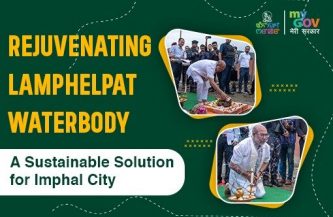Micro-Model of Governance

Identification of aspirational blocks under local area development plan holds promise for rural development, but only with the right leadership
It is no secret that the ‘balanced development’ of all regions is essential for the overall economic development of the country. There are some particularly backward areas. The reasons are either historical, remoteness, infertile land, being prone to natural calamities or having a majority of its population from the Scheduled Castes and Backward castes. These areas pull down the rate of economic growth and, if left unattended, can be the cause of numerous economic and social problems. It is in light of this that a welcome initiative was taken by the Government of India to identify 112 Districts in the country as aspirational districts where the social and economic indicators are particularly poor. The idea was to give a comprehensive thrust to the development of these districts and bring them to the level of other, better-developed districts. This was to be achieved through the convergence of the Central and State Government schemes, collaboration of officers of all departments under the leadership of the district collector, and competition among the district through the system of monthly ranking being done by the NITI Aayog.
The more backward states have a larger number of aspirational districts. This programme was launched in 2018 and it focuses on the strength of each district and goes about developing it in a time-bound manner. There are a set of 49 key performance indicators under five broad socio-economic themes and the incremental progress in these indicators is considered for the ranking. These five themes are health and nutrition, education, agriculture and water resources, skill development, infrastructure and financial inclusion. These districts have to catch up with the others and then aspire to be the best by learning from each other’s experiences. This initiative is part of the strategy to achieve sustainable development goals in a time-bound manner. The state of Uttar Pradesh has eight aspirational districts. An evaluation of this programme in 2020 by UNDP found that it is a ‘clear and comprehensive framework’ that it provides to the districts, distinguishing it from other programmes. Initially, the programme did encounter several challenges but with the right kind of leadership, these issues can be sorted out. It is also found that for the long-term sustainability of this programme motivation of the implementing team and in-house capacity building are vital. So, it has been a successful local area development scheme. Taking this success story forward the Government of India and the NITI Aayog have now come out with an aspirational block development programme which will focus similarly on the comprehensive development of 500 aspirational blocks across the country. This is indeed an idea which will take the development process forward in a progressive manner.
Local area development always gives scope for understanding the problems which are specific to that area and accordingly, a plan can be evolved to develop that area. The knowledge of people living in that area is of immense value in designing projects for their development, as it not only creates awareness but also enables the people of that area to identify with the development plan and also own it. Development can never be forced from the top because then it becomes like a dole and makes the people dependent upon the government for everything, which is not the way it should be. Also, India is indeed a vast country and different areas have diverse problems which need to be resolved. In Uttar Pradesh, almost 25 years ago, the Ambedkar Village Scheme was introduced, focusing on those villages which had a large concentration of scheduled caste population and were economically backward. The scheme paid rich dividends as the performance indicators in these villages improved considerably. Similarly, almost a decade ago, when I was Agriculture Production Commissioner, Government of UP, we introduced the Lohia Village Scheme, where 2000 villages which were backward and had a large share of the OBC population were chosen to be developed in an integrated manner. I remember that about 37 parameters of development were identified and a benchmark survey was done. These indicators include development schemes like connecting the village with a ‘pucca’ road, bringing electricity to the village, providing adequate drinking water sources, building houses for the poor and also schemes like providing education, health care and skill development. There was an initial political issue about the selection of these villages but once it was decided that 10 per cent of the villages would be selected on the recommendation of the political representatives and the remaining 90 per cent would be on rational criteria, the scheme took off and the results were very satisfying. People from various villages began to approach the government for including their village in the scheme. No extra funds were given but the whole concept was that of convergence and the District Collector was made responsible for the implementation.
It can be a matter of discussion whether a district, block or village should be taken as a unit of development. The village-level schemes succeeded, but I feel that aspirational block schemes, by focusing on the blocks, have taken the right approach. Blocks have historically been units of development, and there is an established organizational structure working under the Block Development Officer (BDO), looking after all aspects of agriculture and rural development. It is my view that rural development can be speeded up if we can develop rural growth centers and these aspirational blocks can fulfil this purpose. At the block level schools, colleges and hospitals can be made fully operational, and based on the availability of local raw materials and skill sets of the local people, rural industrial hubs can be created, particularly in the agro-processing sector. This will not only add value to the agricultural produce of that area but also enable the youth to move from farm to non-farm occupations, leading to an increase in their income and also to the development of the state and the nation. Something along this line was visualized in the scheme introduced by the late President Abdul Kalam which was called PURA (Providing Urban Amenities to Rural areas). India needs to develop in such a manner that people living in rural areas find jobs near their place of stay and all basic amenities are available to them.
However, such administrative innovations cannot succeed without competent and participative leadership. This role has to be provided by the district collector, or DM. As Chief Secretary, I tried to make sure that the most energetic and creative young IAS officers were posted as District Magistrates of the backward districts. This not only provided them with an opportunity to learn about development at the grassroots level but also to provide momentum to the growth process in these districts. The same has been the norm for the aspirational districts. State Civil Service employees need to be posted as BDOs in these aspirational blocks.. Convergence and collaboration are not possible without effective leadership and this is where you need the right man at the right place.
The local Block Panchayat functionaries would also need to be sensitized about this initiative and ensure their full involvement in the planning and execution of the various development schemes. Without local leadership, the best results would never be attained. It should become a people’s programme rather than just yet another government scheme.
The local area development plan is the right way forward, but its success depends upon effective leadership provided at the district and block level and also the involvement of all the local elected representatives.
writer is Alok Ranjan, IAS officer (retd), Ex-Chief Secretary, Uttar Pradesh
















